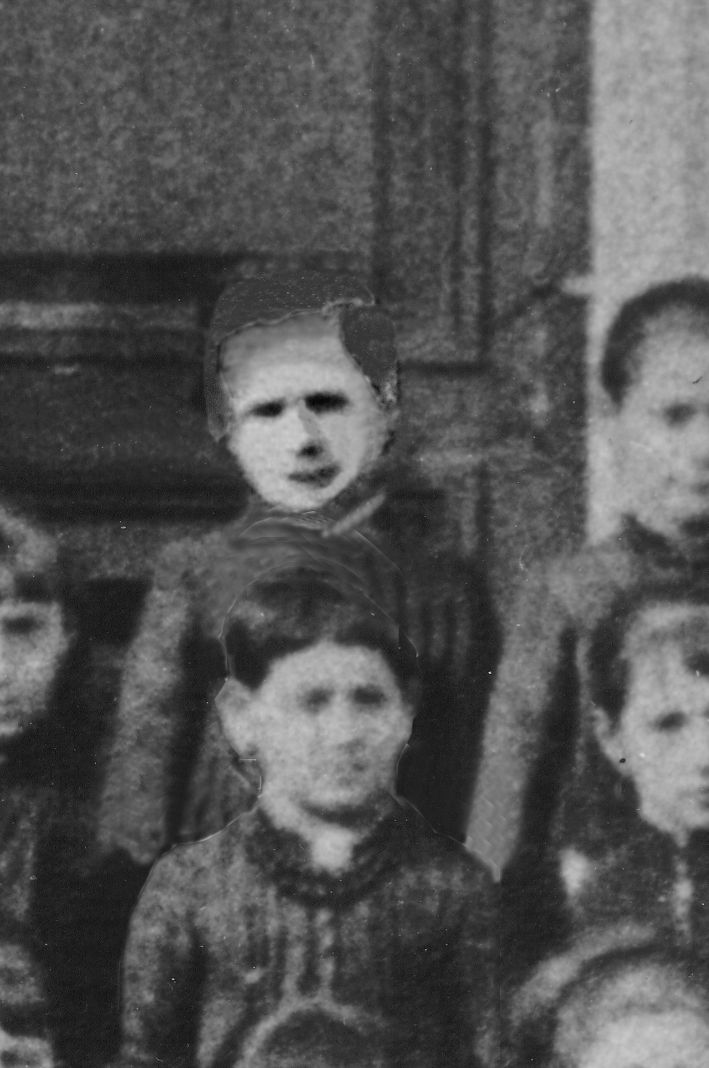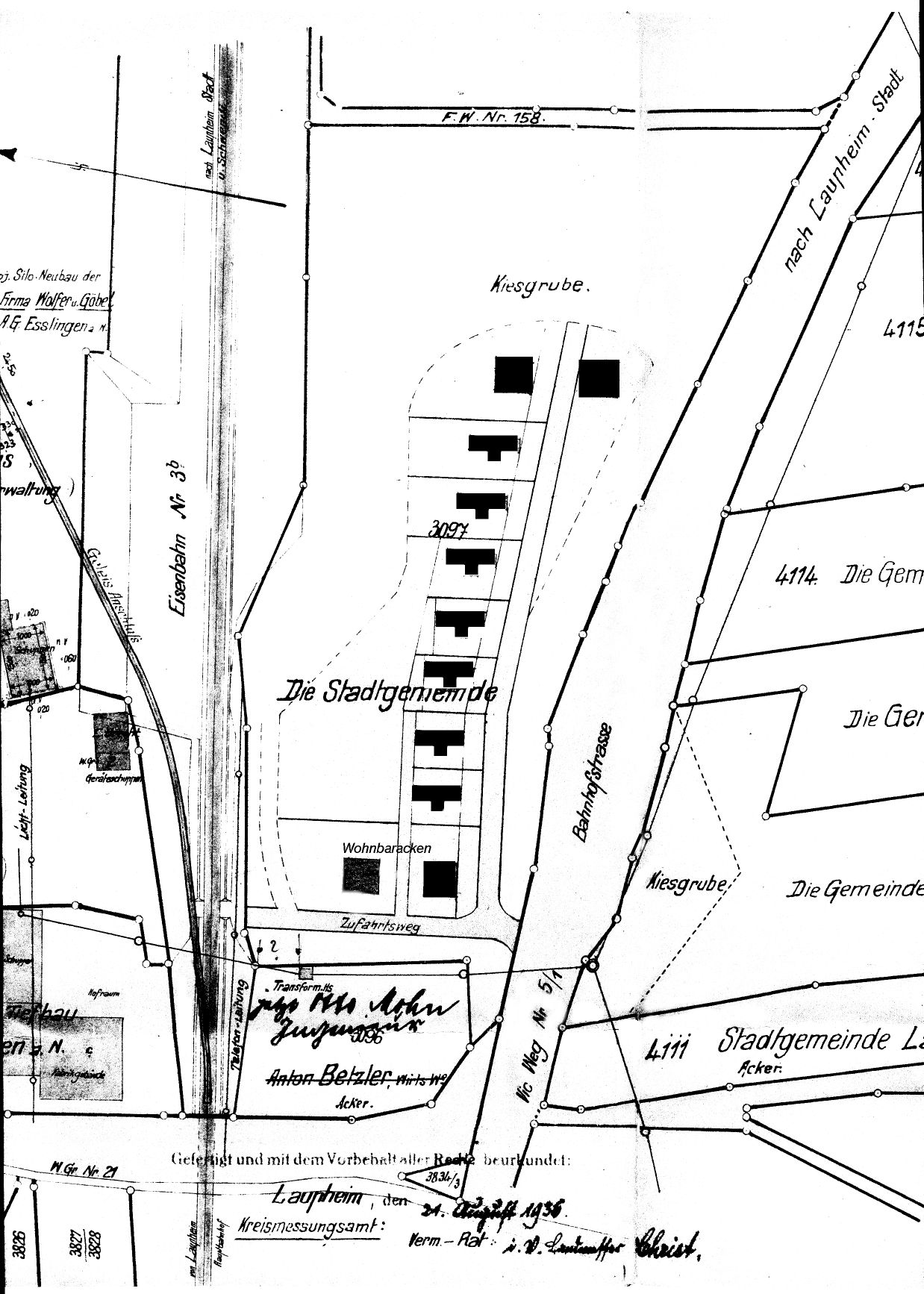 LÖVINGER, Josef, Anna, Berta
LÖVINGER, Josef, Anna, Berta
The Jewish
Community
of
La
Book Pages 354 - 357
Translated by: Peter Ritz
KARL NEIDLINGER
- Josef Lövinger, born May 20, 1869 Laupheim, single, died November 6, 1936 Laupheim
- Anna Lövinger, born November 1, 1876 Laupheim, singel, deported August 19, 1942 to Theresienstadt, murdered September 9, 1942 KZ Treblinka
- Berta Lövinger, born September 10, 1998 Zürich, singel, murdered December 1, KZ Riga
“Most of the members of this family emigrated from 1850 to 1890 to overseas destinations and thus escaped the persecution of the Nazi regime. (...) Leaving their hometown gave them the chance to start new existences in free America as the Jews had full equality since the entry into force of the Constitution of 1789. (...) The offspring of these immigrants today, in part, hold remarkable positions in the fields of science, religion, politics and the economy.”
(from: Ludwig Kahn, The Lövinger family from Laupheim, in: Deutsche Zeitung für Familienkunde, Heft 1/1967)
Ludwig Kahn, himself an offspring of the Laupheim
Lövinger family, published the full version of his essay on his family in
English in the USA. The German version in the above mentioned journal has
been very much shortened. It supplies valuable general information on his
family but unfortunately almost nothing about the last Laupheim Lövingers,
Josef and Anna and their illegitimate daughter Berta. There is only one
poor
photo of the Shoa victim Anna, none of Berta Lövinger;
testimonies of
contemporary witnesses and other sources keep silent on
them people. This
is surely due to the high mobility which characterises
this family and
constantly
led Anna
and Berta Lövinger away from Laupheim.
Josef and Anna’s parents were Isak Lövinger (1834 –
1899) and Helene Lövinger (1838 – 1909), both born in Laupheim and were
cousins. Isak emigrated to America in 1854, Helene followed in 1857 and on
April 3, 1859 they married in St Louis, Missouri. The Midwest of the USA,
Dakota, Minnesota or Missouri were the preferred destinations of this
family. The first two children, Leon-Lazarus (1860) and Sibylle (1862) were
born in the USA but in 1862 Isak and Helene returned to Laupheim. They lived
again in the
family´s house in Kapellenstrasse 26, the central one of the
three houses on Judenberg (Jewish hill) (also the home of the Bergmann family,
see photo page 54) where the Lövingers owned a part since the beginnings.
Here their eleven additional children were born
up to the year 1876, when Anna, the youngest was born.
Seven of those died soon after their birth.
The children:
Leon-Lazarus, the eldest, became a teacher and died at the age of 37 in 1897 in Bad Schussenried. Amalie (born 1865), the fourth child, married into Switzerland and died at the age of 32 named Amalie Bollag in Endingen/Aargau.
Josef, the seventh child, stayed in Laupheim. His
profession is quoted as “tradesman”, he sremained at the same address and
remained single and in later years his youngest sister Anna was his
housekeeper.When he died in 1936 his gravestone was marked with the Levitic
jug as a symbol like many others of his family. That is because the family
name “Lövinger” is derived from “Levi”; it is not a name derived from a
destination as there is no place name “Lövingen” but so to say the
Germanisation of a Hebrew sounding name. There
is also the
spelling
“Levinger”, “Loevinger” or “Lovinger” in the USA, a Laupheim “Levi”
even
hanged
his name about 1800 into “Löffler”. In all there are 44 gravestones with
this name
in the Laupheim cemetery – a clear sign of the size and importance of
this old family, possibly
setted here since
the year 1760.
The eleventh child was the daughter Ida (born 1873) who
also emigrated as a young girl to the USA. Under the name Ida Witmondt she
claimed restitution of the share in the house Kapellenstrasse 26 which
was granted in 1955. Max Kahn-Longini from Basel, certainly a relative of
Ludwig Kahn, the family researcher, had dealt with the restitution claims of
the US branch of the family.
Anna, the thirteenth and last child of the family, can
be detected as an elementary school child on the school photo with teacher
Asher.
How her life continued after school, why she was in
Zürich
when she gave birth to her daughter Berta, what
she did for a living,
when she came back to Laupheim, all these questions
remain
unsolved. Her daughter Berta was registered only from 1928 in Kapellenstrasse
26 in Laupheim and then again
at several intervals. Anna, however, was always a
Laupheim citizen.
As early as
September 1936 Berta lived in a shack in
Wendelinsgrube, probably not forcefully
other many Jewish people later. In
October 1941 her mother Anna had to move there but they could only live
together for a short time: Berta was put on the first deportation train to
Riga on November 28, 1941 and killed there soon after her arrival.

Anna Lövinger as a student at the
Israelitische Volksschule (Israelite Elementary School)
1884/85
Photo by Leo Baeck Institute NY

Photo: Die Notwohnsiedlung “Wendelinsgrube”
(The
emergency dwellings “Wendelinsgrube” )
Extract from a
plan of the year 1936
(Archives Robert Ess)
The emergency dwellings Wendelinsgrube
The
town of Laupheim had constructed
emergency
shacks since 1927 to house socially
deprived and homeless people in the
disused front based part of the gravel pit “Wendelinsgrube”
to the
west of the town
between the road to the Westbahnhof (Western station) and the railroad line .
Immediately after World War I,
in times of great need, these people had been
housed in disused railroad cars which were placed there on a side track. The
enormous housing problem was
never really solved in the time between the wars and as the
extract of the plans of 1936 shows, up to that point there had been eleven wooden shacks
erected with neither water supply nor electricity. To those who were
threatened by poverty and social decline people in Laupheim
used to say:”Watch out or
you will end up in the railroad cars,” meaning the Wendelinsgrube with
its
beginnings as partly mobile railroad car community.
Berta Lövinger probably was the first Jewish dweller in
those shacks. From 1939 the state systematically
set out to deprive the Jews of their
houses and apartments and to send them to those community dwellings. Anna
Lövinger
was able to stay for a relatively long time in her own apartment till October
1941, whereas most Jews had to leave their houses much earlier. Many had
had gone through numerous
removals before they were deported from these community dwellings to the East.
Anna Lövinger also was deported from the Wendelinsgrube along with the other
inhabitants
to Theresienstadt on August 19, 1942. But even there she could not
stay,
but
instead,
four weeks later was
transported to the extermination camp Treblinka where she
was
murderes
in the gas chamber.
Sources:
Quellen:
Staatsarchiv Sigmaringen, Wü 126/2.
Kahn, Ludwig: Die Familie Lövinger aus Laupheim/Württemberg. Ein Beitrag zur
deutsch-jüdischen Auswanderung. In: Deutsche Zeitschrift für Familienkunde, Heft
1, Jan. 1967, Neustadt/Aisch, S. 535-542. John-Bergmann-Nachlass, Reel 1, Box 2,
Stadtarchiv Laupheim.
Translation Peter Ritz May 5, 2016